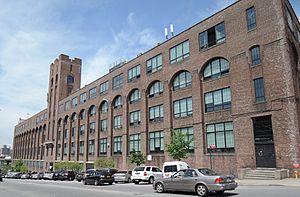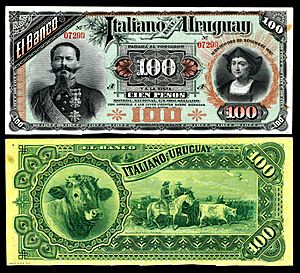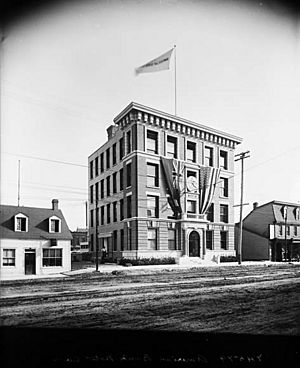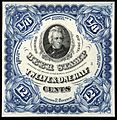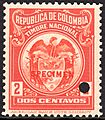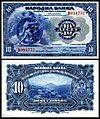ABCorp facts for kids
 |
|
|
Trade name
|
ABCorp |
|---|---|
| Industry | Manufacturing, Finance, Printing |
| Founded | 1795 |
| Headquarters | Boston, Massachusetts |
|
Key people
|
William J. Brown, CEO |
American Banknote Corporation, also known as ABCorp, is a company that makes important things like money, payment cards, and secure documents. They help make sure these items are real and hard to copy. ABCorp's history goes way back to 1795! They even helped the first US bank make money that was hard to fake. Today, they have offices in the United States, Canada, Australia, and New Zealand.
Contents
A Long History of Printing
How It All Started in 1795
The company's story began in 1795. A man named Robert Scot, who was the first official engraver for the U.S. Mint, started a company called Murray, Draper, Fairman & Company. This company made many important printed items. They created certificates for stocks and bonds, paper money for banks, and even postage stamps for a time.
Growing in the 1800s
In 1858, several printing companies joined together to form the American Bank Note Company. They set up their main office in New York City. This new company printed the first paper money for the US government during the American Civil War. These special notes were called "greenbacks" by people.
After 1862, the US government started printing its own money. So, the American Bank Note Company looked for new work outside the country. They ended up printing money and secure papers for 115 different countries!
In 1879, the company grew even more by joining with other printing businesses. They also took over the job of printing US postage stamps.
In 1891, the company started printing something new for American Express: the "Traveler's Cheque". These were like early forms of money orders that people could use when traveling.
By 1894, the company finished its last contract for printing US postage stamps. One famous set they printed was the Columbian Issue, which celebrated the voyages of Christopher Columbus. After this, the US government took over all stamp printing.
The 1900s and Beyond
The company continued to print important documents and money for many countries. In 1933, they printed banknotes for Bank Melli Iran.
During World War II, from 1943 to 1944, the company printed a special series of US stamps. These stamps honored the countries that had been taken over by the Axis. Each stamp showed the flag of one of these occupied nations.
After the war, from 1947 to 1948, they printed billions of Deutsche Marks for Germany.
ABCorp Today
Today, ABCorp's main office is in Boston, Massachusetts. They have manufacturing places in Boston and Toronto, Canada. They also have offices in Australia and New Zealand. The company continues to make secure products for payments, identification, and other important uses.
Famous Buildings
The American Bank Note Company Building and the American Bank Note Company Printing Plant were both built in 1908. These buildings are considered important landmarks in New York City. The main office building is also listed on the U.S. National Register of Historic Places. The company sold these buildings in the 1980s.
Gallery
-
The $5 Columbian stamp (1893), from the last US postage stamp issue produced by the American Banknote Corporation until 1944.
-
Pedro Álvares Cabral - steel engraving by American Bank Note Company
-
US Stamp from the "Overrun Countries series," showing the pre-1905 flag of Korea (similar to the modern flag of South Korea).
-
Dutch Guilder printed for the Dutch government-in-exile, 1943
See also
 In Spanish: American Bank Note Company para niños
In Spanish: American Bank Note Company para niños
- Canadian Bank Note Company
- New York Bank Note Company
- Postage stamp
- Postage stamps and postal history of the United States
- Banknotes of Turkey



